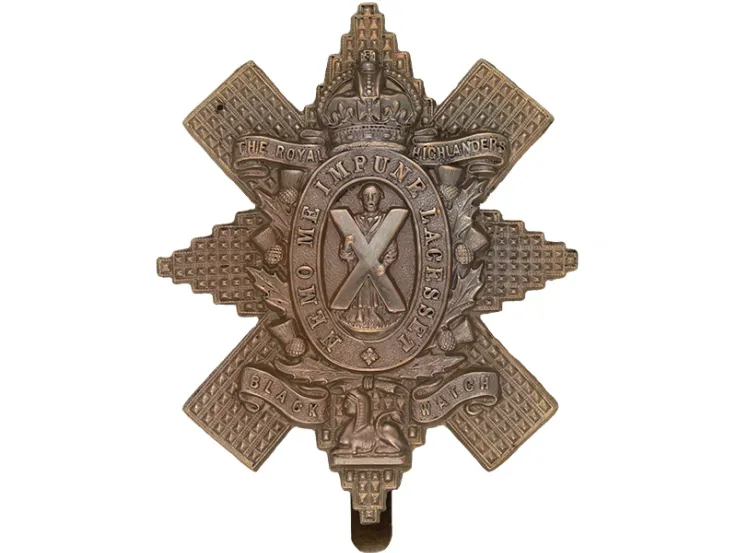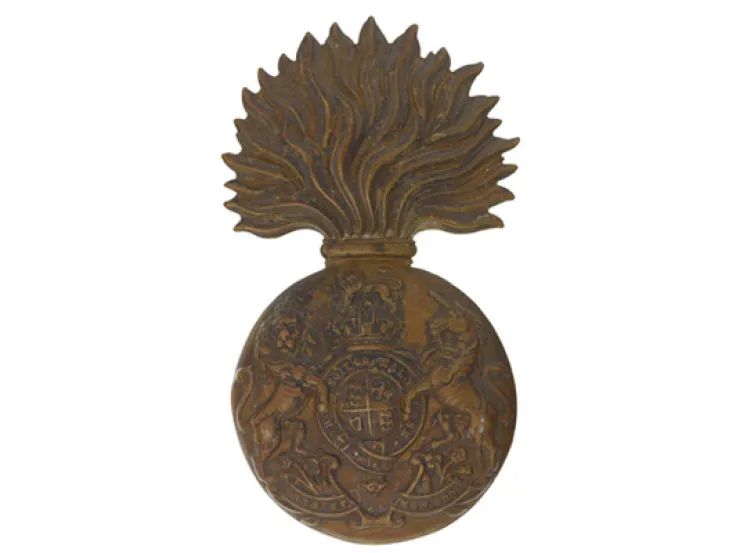Explore more from Regiments and Corps
90th Regiment of Foot (Perthshire Volunteers) (Light Infantry)
3 minute read
Origins
In 1794, Britain’s Army raised several new units to meet the demands of the French Revolutionary Wars (1793-1802). Colonel Thomas Graham established the 90th Regiment of Foot, raising one battalion in February of that year, closely followed by another in May.
In December 1794, 2nd Battalion was transferred to the Royal Marines, while 1st Battalion marched to England and trained as light infantry. This made it the oldest British light infantry unit.
In September 1795, the regiment landed in Brittany to support a French Royalist force as part of the abortive Quiberon campaign. In 1798, it took part in the capture of Menorca. Then, in 1800, it was stationed at both Cadiz and Malta.
Early 18th century
The regiment took part in the Egyptian Campaign (1801), fighting at Aboukir (1801), before returning to England. It was then sent to garrison Ireland. While there, it absorbed the Perthshire Volunteers, which was reflected in a change to its title.
In 1804, it again raised a 2nd Battalion. This remained in Scotland and Ireland on garrison duties until its disbandment in 1817.
1st Battalion fought in the West Indies for nine years from 1805, assisting in the capture of Martinique (1809) and Guadaloupe (1810). In 1814, it was sent to garrison Montreal during the War of 1812 (1812-15) and only arrived back in Europe in August 1815, too late for Waterloo.
After a short time serving as occupation troops in France, it joined the British forces on Malta and the Ionian Islands for 10 years from 1820. It returned to Britain in 1830 and then spent 11 years on Ceylon (now Sri Lanka) from 1835.
Quiz
Why was the 90th Regiment nicknamed the Perthshire Grey Breeks?
Legend has it that some of the regiment’s original recruits were released from jail to join and were still wearing prison issue grey trousers when they enlisted!
Victorian wars
The regiment was posted to South Africa in 1846 to fight in the Seventh Cape Frontier War (1846-47). On the way there, three of its companies were shipwrecked on Mauritius.
In 1854, it was posted from England to the Crimean War (1854-56). It fought at Balaklava (1854) and the Siege of Sevastopol (1854-55).
After less than a year back in England, the regiment sailed for China in 1856. During the voyage, the Indian Mutiny (1857-59) broke out and it was diverted to Bengal. En route, one of the regiment’s troopships, the ‘Transit’, was wrecked off the coast of Sumatra (now part of Indonesia).
During the Mutiny, the 90th took part in the First and Second Reliefs of Lucknow (1857), winning six Victoria Crosses. The regiment remained in India on garrison duties until 1869.
It was later posted back to South Africa for the Ninth Cape Frontier War (1877-79) and the Zulu War (1879).
Legacy
The regiment returned to India in 1881, where it was merged with the 26th (The Cameronians) Regiment of Foot to form The Cameronians (Scottish Rifles).
Regimental museums
The National Army Museum works with a network of Regimental and Corps Museums across the UK to help preserve and share the history and traditions of the Army and its soldiers.
Discover more about the 90th Regiment of Foot (Perthshire Volunteers) (Light Infantry) by visiting Low Parks Museum in Hamilton.












